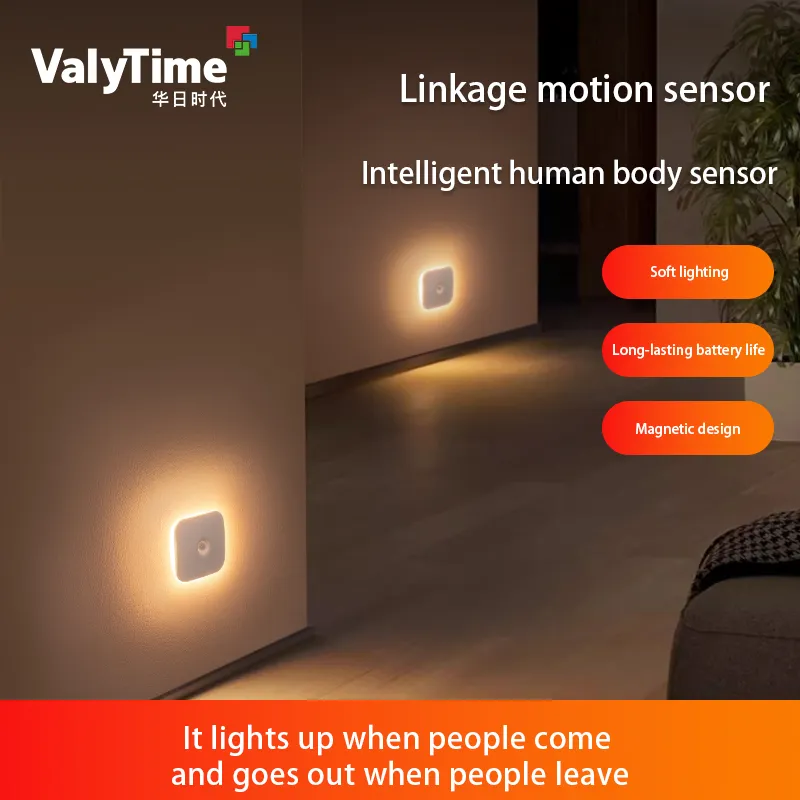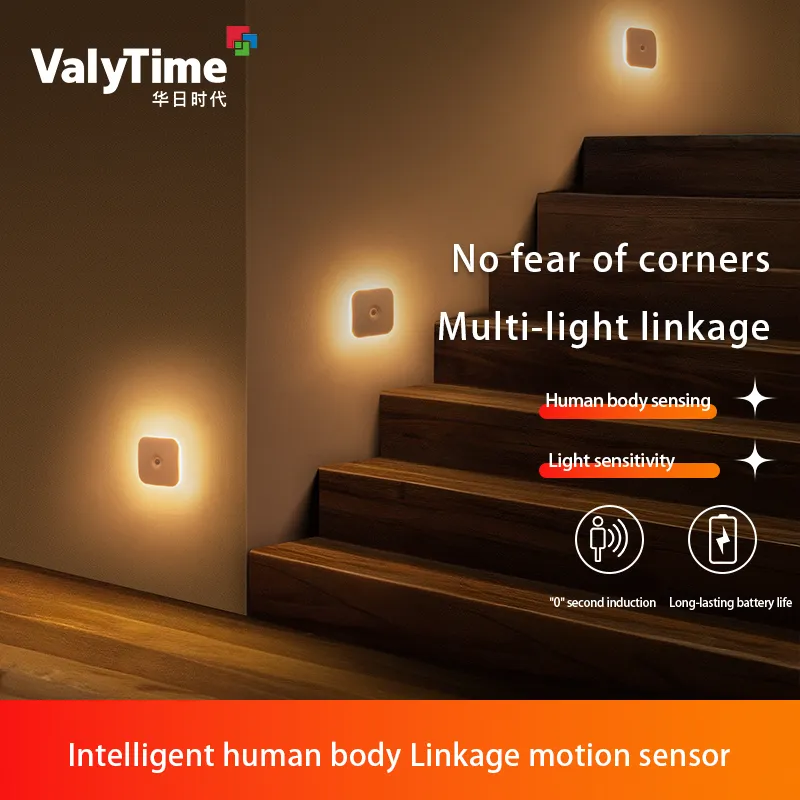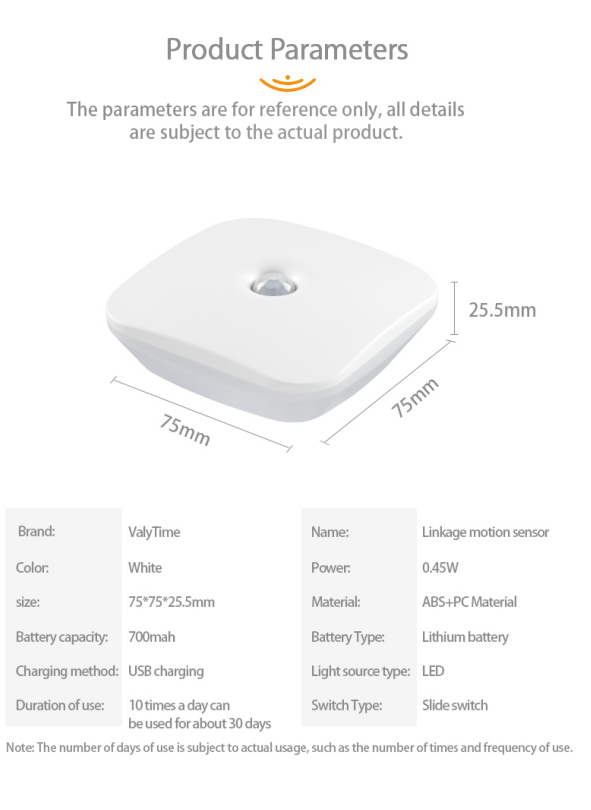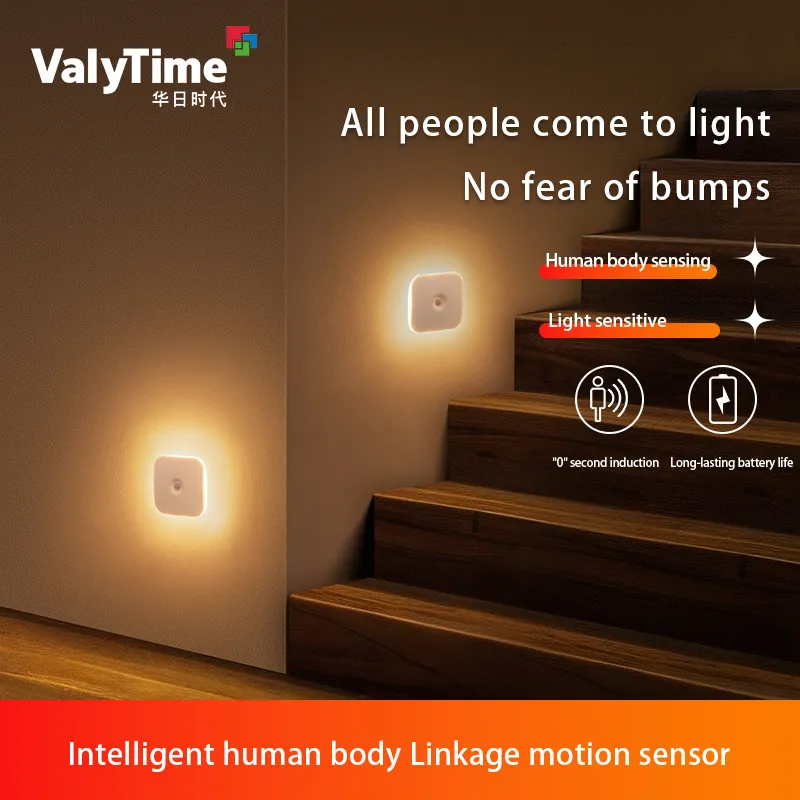Why won't my indoor motion sensor night light turn off?
Indoor motion sensor night lights detect human movement or heat changes through built-in sensors, and automatically turn on or off, providing convenient and energy-saving lighting for the home. However, sometimes people encounter a confusion - "Why won't my indoor motion sensor night light turn off?" This problem not only affects the lighting effect, but also may cause unnecessary waste of electricity. Therefore, it is particularly important to solve this problem.
In this article, we will explore in detail the common reasons why indoor motion sensor night light does not turn off, and provide corresponding solutions to help readers solve this problem.

What is the principle of indoor motion sensor night light?
To understand why indoor motion sensor night light does not turn off, we first need to understand how it works. Motion sensor night lights activate lighting by sensing human movement or heat changes in the surrounding environment. Generally speaking, there are two main types of sensors for motion sensor night lights: infrared sensors and ultrasonic sensors.
1. Infrared sensor
Infrared sensors are the most commonly used type in indoor motion sensor night lights. They detect changes in surrounding heat to determine whether an object has entered its sensing area. Human and animal body temperatures are usually higher than the surrounding environment, so infrared sensors can detect human activity by identifying changes in body temperature. Once the sensor detects human or animal movement, the night light automatically turns on. If there is no further movement within a set time, the light automatically turns off.
2. Ultrasonic sensor
Ultrasonic sensors detect the movement of objects by sending high-frequency sound waves and calculating the time difference of the echoes. When a person or other object enters the sensing area, the reflected sound waves change, triggering the sensor to activate the light. Ultrasonic sensors usually have a wide detection range and are suitable for larger spaces.
Regardless of the sensor, the key function of the motion sensor night light is to turn off the lighting when there is no further activity. If the light does not turn off at the appropriate time, it means that something is affecting its normal operation.

Why won't my indoor motion sensor night light turn off?
Reasons why the indoor motion sensor night light cannot be turned off:
1. The sensor fails to correctly detect the cessation of motion
2. The sensor sensitivity is set too high
3. Continuous environmental changes
1. The sensor fails to correctly detect the cessation of motion
Most indoor motion sensor night lights stay on for a certain period of time until they detect a long period of no motion. If the sensor fails to successfully detect the cessation of motion, it will assume that there is still activity and keep the light on. Specific reasons may include the following aspects:
● Sensor range problem: The detection range of motion sensors is usually limited. If the sensor's coverage is too small or not suitable for the spatial layout, it may not detect that someone has left or remains on.
● Improper sensor position: If the sensor is installed in an undesirable position (for example, too high, too low, or blocked), it may cause it to misjudge whether there is motion. Therefore, even if there is no activity in the room, the sensor still cannot detect the signal of pause.
2. The sensor sensitivity is set too high
Some motion sensor night lights are equipped with a sensitivity adjustment function. When the sensitivity is too high, the sensor may react to small movements or environmental changes. For example, the swing of a fan on the wall, the slight sway of curtains, or even the movement of a cat can be mistaken for motion. In this way, the sensor thinks there is activity and the light cannot be turned off. By adjusting the sensitivity setting, users can optimize the sensor's response and avoid false triggering of the light.
3. Continuous environmental changes
Some external factors may also affect the turning off of the motion sensor night light. For example:
● Temperature changes: The working principle of the sensor depends on the change of the ambient temperature. If the temperature in the room is unstable or there are temperature fluctuations (such as frequent activation of the air conditioner or heater), the sensor may think that there is movement of objects in the environment.
● Air flow: Indoor air flow, especially when there is wind, may cause curtains or other light objects to swing, sending false signals to the sensor.
● Electromagnetic interference: Some electrical appliances (such as wireless networks, microwave ovens, fans, etc.) may generate electromagnetic interference, which may affect the normal operation of the sensor.
4. Low battery power
Many motion sensor night lights are battery-powered. Low battery power may cause the sensor to be sluggish or unable to turn off normally. When the battery power is low, the sensitivity of the sensor may decrease, causing it to mistakenly keep the light on. The solution to this problem is to regularly check and replace the batteries to ensure the lamp is functioning properly.
5. Damaged or faulty sensor
If the motion sensor night light never turns off, the sensor itself may be faulty. For example, the sensor's sensing module may be damaged due to long-term use or external impact. At this time, the sensor cannot sense environmental changes normally and therefore cannot turn off the light. In this case, the lamp may need to be repaired or replaced.
6. Setting time is too long
Some automatic sensor night lights have a delay setting that allows the lamp to remain on for a certain period of time after sensing that motion has stopped. Sometimes, the user sets the delay too long, causing the light to remain on when it is not necessary. Checking the settings and adjusting the delay time may help solve this problem.

How to solve the problem of motion sensor night light not turning off?
For the above problems that may cause indoor motion sensor night light not turning off, users can take the following measures to solve them:
1. Check the sensor position
Make sure the sensor is installed in a suitable position and is not blocked by any obstacles. Generally speaking, the sensor should be installed in a higher position so that it can cover a wider range. If the sensor is installed too low or blocked by furniture, it may affect its detection ability.
2. Adjust sensor sensitivity
If the sensor sensitivity of the light is set too high, you can try to lower the sensitivity to reduce the response to small movements. Generally, the sensitivity adjustment function of the sensor is very simple and the user can adjust it as needed.
3. Replace the battery
Check the battery level of the light and make sure it is fully charged. If the battery is low, the light may not turn off. Replace the battery regularly to keep the device running properly.
4. Clean the sensor
Sometimes, the sensing area of the sensor may be covered with dust or dirt, causing it to malfunction. Clean the surface of the sensor regularly to ensure that it is sensing properly.
5. Adjust the delay setting
If the indoor motion sensor night light has a delay setting, check and adjust its off time to ensure that it does not stay on when it is not needed.
6. Check for electromagnetic interference
If you suspect electromagnetic interference is the cause of the problem, you can try to move other electrical appliances away from the sensor or choose a light that is more resistant to interference.
7. Repair or replace the sensor
If the above measures do not work, you may need to check whether the sensor is faulty. At this time, you can consider contacting the manufacturer for repair or replacement.

Huari Lighting Co., Ltd has been a trusted LED lighting manufacturer since 1996. We produce high-quality LED lighting fixtures and bulbs designed to meet various consumer needs. From energy-efficient LED downlights to stylish wall lights and indoor motion sensor night light solutions, our diverse range of products can suit any application. Our factory, located in China, is equipped to deliver large orders at affordable prices. For businesses looking to buy in bulk or wholesale, we offer competitive discounts and provide comprehensive quotes tailored to your needs. Partner with us for high-quality products at low prices and unmatched reliability.
